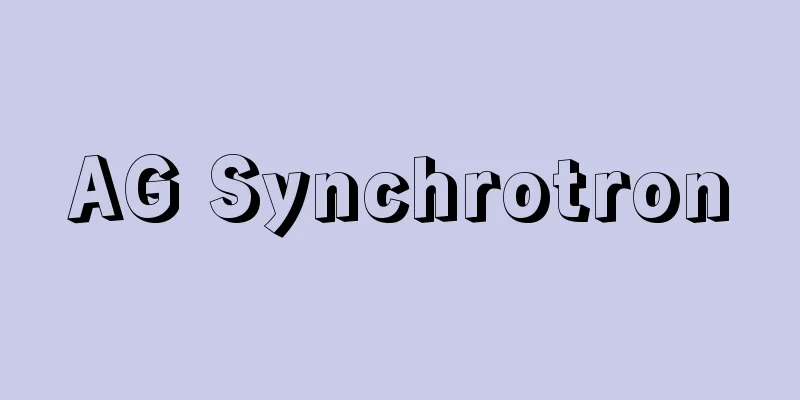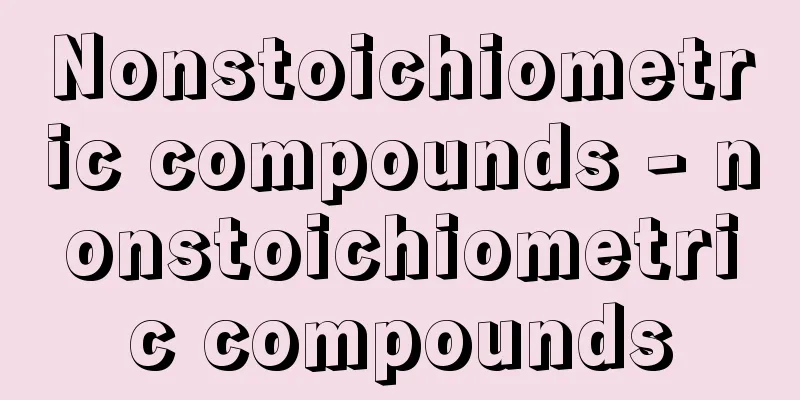Antimony sulfide

|
A compound of antimony and sulfur. Trivalent and pentavalent forms are known. (1) Antimony(III) sulfide. Chemical formula: Sb 2 S 3 , formula weight: 339.7. Naturally occurring as stibnite. Melting point: 550°C, boiling point: about 1150°C. Specific gravity: 4.64. Stable crystals are obtained by melting metallic antimony and sulfur. When hydrogen sulfide is passed through a hydrochloric acid solution of antimony(III) compounds, an amorphous unstable red precipitate is obtained. When the unstable form is heated to 200°C in a carbon dioxide stream, it changes to stable black orthorhombic crystals (occurring as stibnite, specific gravity: 4.64). The amorphous red powder has a melting point of 546-554°C. Specific gravity: 4.15. It is photosensitive and can be used as a semiconductor material. When heated in air, it becomes antimony(III) oxide. Insoluble in water. Soluble in concentrated hydrochloric acid. Dissolves in alkaline sulfide solution to become thioantimonite M I 3 SbS 3 . When heated with sulfur and an alkaline hydroxide solution, it dissolves to form the thioantimonate M I 3 SbS 4. When a solution of the thioantimonate is acidified, the sulfide precipitates. It is used in the manufacture of matches. (2) Antimony(V) sulfide: Chemical formula Sb2S5 , formula weight 403.8 . At 75°C it decomposes into sulfur and antimony(III) sulfide. It is obtained by passing hydrogen sulfide through a concentrated hydrochloric acid solution of pentavalent antimony. It is an orange-red amorphous powder. It dissolves in an alkaline sulfide solution as a thioantimonate. (3) Antimony tetrasulfide (Sb 2 S 4) is also known, but this is a yellow-red powder obtained by passing hydrogen sulfide through a hydrochloric acid solution of antimony oxide (III). It is thought to be a mixture of antimony sulfide (III) and antimony sulfide (V). [Kenichi Morinaga and Katsunori Nakahara] Source: Shogakukan Encyclopedia Nipponica About Encyclopedia Nipponica Information | Legend |
|
アンチモンと硫黄(いおう)の化合物。3価と5価のものが知られる。 (1)硫化アンチモン(Ⅲ) 化学式Sb2S3、式量339.7。天然に輝安鉱として産する。融点550℃、沸点約1150℃。比重4.64。金属アンチモンと硫黄を融解すると安定型の結晶が得られる。アンチモン(Ⅲ)化合物の塩酸溶液に硫化水素を通すと無定形不安定型の赤色沈殿が得られる。不安定型を二酸化炭素気流中で200℃に熱すると安定型の黒色斜方結晶(輝安鉱として産出、比重4.64)に変わる。無定形の赤色粉末は融点546~554℃。比重4.15。感光性があり、半導体の材料となる。空気中で熱すると酸化アンチモン(Ⅲ)になる。水に不溶。濃塩酸に溶ける。硫化アルカリ溶液に溶けてチオ亜アンチモン酸塩MI3SbS3となる。硫黄とともに水酸化アルカリ溶液と熱するとチオアンチモン酸塩MI3SbS4を生じて溶ける。チオ酸塩の溶液を酸性にすると硫化物が沈殿する。マッチの製造に用いられる。 (2)硫化アンチモン(Ⅴ) 化学式Sb2S5、式量403.8。75℃で硫黄と硫化アンチモン(Ⅲ)に分解する。五価アンチモンの濃塩酸溶液に硫化水素を通して得られる。橙赤(とうせき)色の非晶質粉末。硫化アルカリ溶液でチオアンチモン酸塩となって溶ける。 (3)ほかに四硫化二アンチモンSb2S4があるとされているが、これは酸化アンチモン(Ⅲ)の塩酸溶液に硫化水素を通じると得られる黄赤色粉末。硫化アンチモン(Ⅲ)と硫化アンチモン(Ⅴ)の混合物と考えられている。 [守永健一・中原勝儼] 出典 小学館 日本大百科全書(ニッポニカ)日本大百科全書(ニッポニカ)について 情報 | 凡例 |
Recommend
Microevolution
It refers to the change over time in gene frequen...
Aesop's Fables
A collection of ancient Greek fables that portray...
Large Cobra - Large Cobra
...The species distributed mainly in the Kanto re...
Sumo stable - Sumobeya
In sumo wrestling, there are sumo stables that are...
Silver tree
An evergreen tall tree of the Proteaceae family na...
Bivalve mollusks - Nimai Ii
A class in the phylum Mollusca. Many of the bival...
Percopsis omiscomayeus (English spelling) Percopsisomiscomayeus
...However, the dorsal and anal fins have weak sp...
Jarnach, P.
...Busoni composed the work from his own libretto...
Evadne
…the name given to the marine crustaceans of the ...
Geospiza scandens (English spelling)
…[Nakamura Toru]. … *Some of the terminology expl...
Ashvatta - Ashvatta
… Among the images of the cosmic tree are the ups...
Nearchos - Nearchos (English spelling)
He was one of Alexander the Great's most trus...
Kudzu cutter - Kudzu cutter
Kudzu starch is mixed with sugar and hot water, k...
Endorsement - Hashiuragaki
A term used in paleography. The right edge of a do...
Silent trade
A form of trade that is carried out without the us...









